 Asset Publisher
Asset Publisher
Polish forests
Poland is in the European lead, while concerning the area of all forests. They cover about 29,2 % of the country territory, and grow within the area of 9,1 million hectares. The overwhelming majority of the forests is state owned, of which almost 7,6 million hectares are managed by the State Forests National Forest Holding..
The number of Polish forest is still growing. The forestation rate of the country has increased from 21 % in 1945 to 29,2 % at the moment. Between 1995 and 2008, the forest area increased by 310 thousand ha. The basis for afforestation works is the "National Programme for Increasing the Forest Cover" (KPZL), assuming an increase of the forestation rate up to 30 % by 2020 and up to 33 % by 2050. Polish forests abound in flora, fauna and fungi. 65 % of the total number of animal species live there.
The forests grow in our country on poor soils, mainly because of the development of the agriculture in previous years. It influences the distribution of the types of the forest sites in Poland. Over 55 % of the forest areas is covered with coniferous forests. In other areas, there are forest sites, mainly the mixed ones. Their small part constitute alder and riparian forests – not more than 3 %.
In the years 1945 – 2011 the area of natural deciduous tree stands within the area of the State Forests National Forest Holding increased from 13 to 28,2 %.
Within the lowlands and uplands the most often occurring tee species is pine. It covers 64,3 % of the forest area of the State Forests National Forest Holding and 57,7 % of private and commune forests. In the mountains the predominant species is European spruce ( in the west) and European spruce with beech (in the east). Domination of pine is the result of carrying on sustainable forest management in the past. Once, the monocultures (crops or cultivations of one species) were the answer to the great demand of industry for wood. Such forests appeared to be quite fragile to climatic factors. They also were often the prey of pests' expansion.
In Polish forests, the share of other tree species, especially deciduous trees have been systematically increasing. The foresters have stepped aside from monocultures – that is why, they try to fit specific species of the forest stand to the natural stand, that would be proper for the given area. Thanks to that, in the years 1945 – 2011, the area of the deciduous tree stands within the lands of the State Forests National Forest Holding increased from 13 to 28,2 %. There occur more and more frequently the following tree species: oaks, ashes, maples, sycamore maples, elms, but also birches, beeches, alders, poplars, hornbeams, aspens, tilias and willows.
Our forests are the most often represented by the forest stands aged 40 to 80 years. The average age of the forest equals 60 years. More and more trees are of big size at the age over 80 years. Since the end of the Second World War, the forests' area has increased up to almost 1,85 million hectares.
Raport o stanie lasów w Polsce 2012
 Asset Publisher
Asset Publisher
 Asset Publisher
Asset Publisher
Lasy nadleśnictwa
Lasy nadleśnictwa
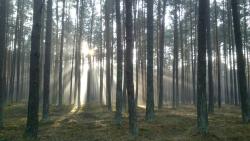 foto. Wojciech Ostapowicz
foto. Wojciech Ostapowicz
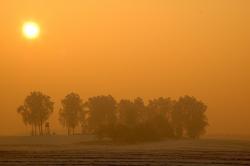 foto. Wojciech Ostapowicz
foto. Wojciech Ostapowicz
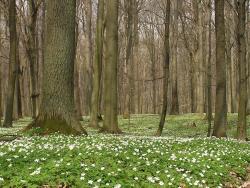 foto. Wojciech Ostapowicz
foto. Wojciech Ostapowicz
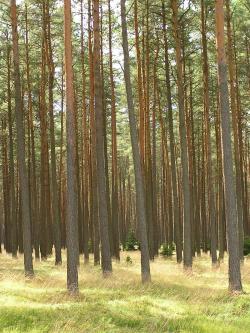 foto. Wojciech Ostapowicz
foto. Wojciech Ostapowicz
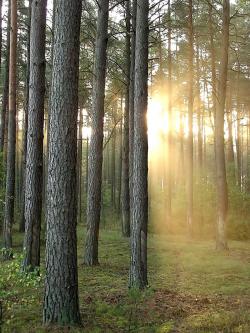 foto. Wojciech Ostapowicz
foto. Wojciech Ostapowicz
 foto. Wojciech Ostapowicz
foto. Wojciech Ostapowicz
Nadleśnictwo Płytnica w jego dzisiejszym zasięgu terytorialnym powstało z dniem 1stycznia 1993r. z połączenia obrębu Dobrzyca z Nadleśnictwa Wałcz i obrębu Płytnica z Nadleśnictwa Jastrowie. Historia Nadleśnictwa Płytnica sięga 1945 roku, w którym obręby Dobrzyca i Płytnica, stanowiły samodzielne jednostki organizacyjne.
Z dniem 1 stycznia 1973 r. obszar ówczesnego Nadleśnictwa Płytnica, jako obręb leśny został włączony do Nadleśnictwa Jastrowie, a Nadleśnictwo Dobrzyca, jako obręb leśny do Nadleśnictwa Wałcz.
W styczniu 1993 r. ponownie odłączono obręb Płytnica z Nadleśnictwa Jastrowie oraz obręb Dobrzyca z Nadleśnictwa Wałcz i utworzono dwuobrębowe Nadleśnictwo Płytnica, które w takim kształcie funkcjonowało do końca 2013 r.
W efekcie reorganizacji i wykonania nowych prac urządzeniowych od 1 stycznia 2014 r. Nadleśnictwo Płytnica funkcjonuje, jako nadleśnictwo jednoobrębowe na powierzchni 16 728 ha.
Teren Nadleśnictwa Płytnica należy do jednego z bardziej urokliwych na Pomorzu i Wielkopolsce. Duże, prawie bezludne, kompleksy leśne sąsiadują tu z pięknymi rzekami i ich głęboko wciętymi dolinami oraz dzikimi jeziorami.
Dużą atrakcją są występujące miejsca tak zwanej „ciszy cywilizacyjnej" gdzie poza szumem drzew, śpiewem ptaków i pluskiem wody nie docierają inne dźwięki.
Na terenie Nadleśnictwa występuje wiele ciekawych, atrakcyjnych i inspirujących miejsc, które powinny zainteresować zarówno przyrodników, turystów, leśników jak i wszystkich, którym sprawy otaczającej nas przyrody są bliskie.
Należą do nich: rezerwaty, pomniki przyrody oraz rośliny i zwierzęta, podlegające ochronie gatunkowej.
Zagospodarowanie turystyczne na terenie Nadleśnictwa Płytnica, jako priorytetowe uwzględnia sprawy związane z ochroną przyrody.
Potrzeba odpowiedniego organizowania ruchu turystycznego, wynika głównie z uzależnienia go od istniejących form ochrony przyrody.
Funkcjonujące rezerwaty przyrody w obszarze doliny rzeki Rurzycy, stanowią przepiękną i unikatową wizytówkę naszego terenu, która przyciąga rzesze turystów. Zainteresowanie w tym zakresie jest z roku na rok coraz większe, tym bardziej, że nasze lasy są „zagłębiem runa leśnego".
Corocznie odwiedzają nas tysiące grzybiarzy i zbieraczy jagód z całej Polski.
Działalność edukacyjną, w mniej lub bardziej zinstytucjonalizowanej formie, nadleśnictwo prowadzi od początku swojego powstania.
Przez pierwsze lata odbywało się to w formie pojedynczych spotkań czy pogadanek, prowadzonych w szkołach przez pracowników służby leśnej.
Od 1998r. Nadleśnictwo prowadzi spotkania w utworzonym przy siedzibie nadleśnictwa w Nowej Szwecji punkcie edukacyjnym, który wyposażony jest w tablice informacyjno-edukacyjne, miejsce z ławami do siedzenia, wiatę oraz miejscem na ognisko.


 fot. Paweł Fabijański
fot. Paweł Fabijański
 fot. Paweł Fabijański
fot. Paweł Fabijański
 fot. Paweł Fabijański
fot. Paweł Fabijański





